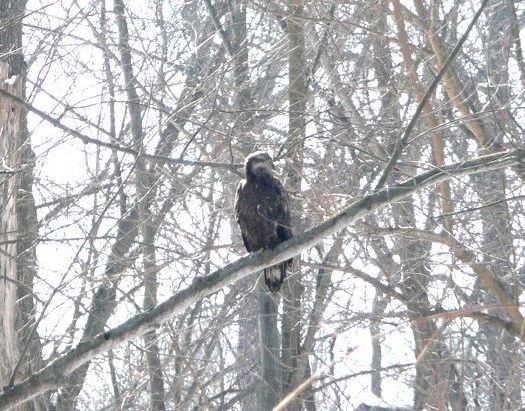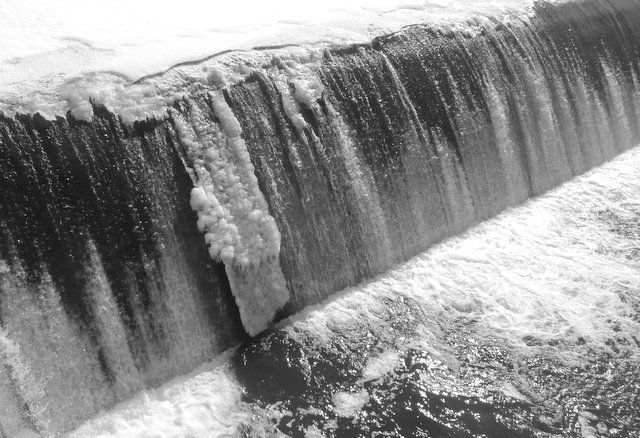Ducks are still taking advantage of the open water on the Elkhart River in Goshen, Ind. this winter
- Michelle Wood: SWCD
- February 21, 2014
- 508
After two more 10 degrees below zero nights, the Goshen City Water Department has put a warning that frost has now reached down 4.5 feet in the city, meaning that residents need to leave a faucet or two running slowly all the time to avoid frozen city pipes. I imagine that is a first here, and it probably isnt all that much different in Holmes and Wayne counties. However, when it is this cold, the sun tends to shine, making the 18-24 inches of snow look quite beautiful.
This morning I decided to try to get as close to the Elkhart River as possible along the three to four miles that the river wanders through Goshen. In many places there are houses all along the banks, making it hard to get open views of the water. Fortunately, the river is running quite swiftly, keeping much of it open, although some sections are frozen.
Starting downtown, I walked across several bridges, which is now possible since the city has plowed the sidewalks. There were a dozen Common Goldeneye, joined by nine Red-breasted Mergansers and lots of Canada Geese. At one point there were two Greater Scaup, along with one lone female Hooded Mergansers. Mallards were also present in small numbers at the same location.
Driving to the Indiana Ave. bridge, I was glad to see that two White-winged Scoters have stayed around. Several Common Mergansers and more Common Goldeneyes were also visible from the bridge. Another mile or so west, a small road winds along the river briefly. A young Bald Eagle flew up into a tree, where it stayed while I enjoyed the view. This was the first Bald Eagle that Ive seen in Goshen since they are not as common out here as in Ohio.
Closer to our home at the dam and race, the small area of open water was filled with 215 Mallards. Two more male Common Goldeneye were interacting at the base of the water coming over the dam. Ice has now formed partway down the cascading waterquite amazing to see.
Other birds encountered during the morning included a calling Yellow-bellied Sapsucker, several Yellow-rumped Warblers, Brown Creepers, Golden-crowned Kinglets and a number of American Robins and Eastern Bluebirds, plus the normal winter birds that we see around the feeders. A singing Carolina Wren was a good sign since Ive been afraid that most of these half-hardy wrens may have already succumbed to the extreme cold this winter. Two Mute Swans were sleeping along the river in town. Near them was a dead Mute Swan, one bird that did not make it.
In Wayne and Holmes, many Snow Buntings and Lapland Longspurs have been reported, with flocks of 250 or more Longspurs. Also present in these flocks are Horned Larks and some American Pipits. Several Snowy Owls have still been seen in the last week or so, although they seem to be moving around according to the Bobolink Rare Bird Alert. As we hit the middle of February it would seem that winter will certainly have to lessen its grip before long. No matter when that happens, this will still be a winter to remember.
Good birding!
Contact Bruce Glick at birderbruce@yahoo.com or call 330-317-7798.




